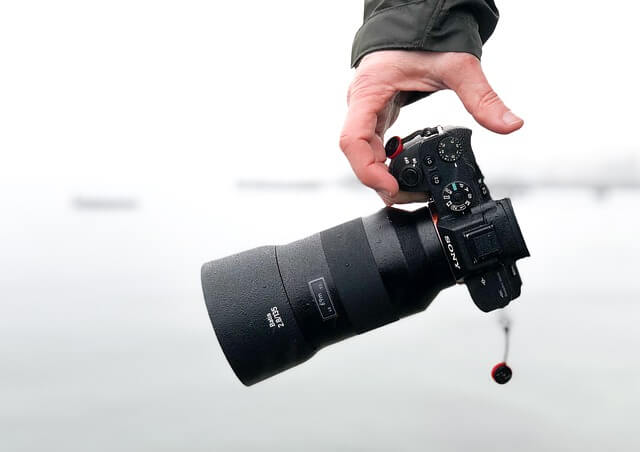Photography & Videography Tools

The photography and videography industry relies on a wide array of tools to produce high-quality content, from professional studio shoots to outdoor filming. Whether you’re a photographer, videographer, or a content creator, having the right equipment is essential to achieving excellent results. Whether you’re a seasoned professional or an enthusiastic beginner, finding the right gear can elevate your work. Explore our comprehensive guides for every photography and videography need, from cameras and lighting to editing software and accessories.
What Sub-Categories fall under Photography & Videography?
- Photography: Cameras, lenses, tripods, reflectors.
- Videography: Gimbals, drones, lighting kits, stabilizers.
- Post-Production: Editing software, color grading tools, monitors.
General Tools for Photography and Videography
Essential Safety Gear for Photography & Videography Tasks
Safety is a priority in every creative field, whether you’re working with complex equipment, setting up heavy gear, or managing lighting. Having the right safety equipment ensures that you can work efficiently while protecting yourself from injury.
- Safety Glasses: Shields your eyes from bright lights, camera flashes, and potential debris during setups or on-location shoots.
- Work Gloves: Protects your hands when handling heavy equipment, tripods, or lighting stands, preventing cuts, abrasions, or burns.
- Knee Pads: Provides comfort and protection when kneeling for extended periods, especially during studio setups or low-angle shots.
- Hearing Protection: Essential for preventing hearing damage during shoots in loud environments, such as concerts or busy film sets.
- Proper Footwear: Non-slip shoes or boots with protective soles keep your feet safe from heavy equipment drops and offer stability on various surfaces.
- Respirator/Dust Mask: Prevents inhalation of dust, particles, or fumes during set construction, prop creation, or working in poorly ventilated areas.
- High-Visibility Vest: Useful when shooting in crowded or high-traffic areas, ensuring you’re seen by others and reducing the risk of accidents.
- Fall Protection: Safety harnesses are critical when working on elevated platforms or using drones for aerial photography or videography.
This gear ensures that you stay safe while creating, no matter the project or environment.
What Helpful Resources are there for Photo/Video?
For more in-depth safety standards, industry best practices, and training resources in photography and videography, check out the following authoritative sources:
- OSHA Photography and Studio Safety Standards – Guidelines for maintaining a safe workspace in photo and video studios.
- American Society of Media Photographers (ASMP) – Industry best practices, safety tips, and legal resources for photographers.
- The Association of Professional Videographers (APV) – Guidelines on safety and best practices for videographers.
- National Press Photographers Association (NPPA) – Offers resources on ethical standards, safety, and professional development in photography.
- Centers for Disease Control (CDC) Workplace Safety – Guidelines for preventing injuries and maintaining health on set.
These sources provide vital information to help you maintain a safe and compliant workspace, whether you’re in a studio or on location.
Frequently Asked Questions (FAQ)
Educational Path to a Career in Photography / Videography
1. High School Education and Vocational Training
Overview: While photography and videography are often thought of as creative arts, they also require technical skills that don’t necessarily demand a four-year degree. A high school diploma or equivalent (GED) can be a solid starting point, and many schools offer programs to nurture creative and technical expertise.
What to Focus On:
- Mathematics: Basic algebra and geometry are helpful for understanding concepts like framing, dimensions, and angles in photography.
- Technical Education: Schools may offer media classes that introduce students to basic camera operations, lighting, and editing software.
- Vocational Schools: Some high schools collaborate with vocational programs that provide training in digital media, video production, and other related fields.
2. Trade Schools and Apprenticeships
Trade Schools:
- Overview: After high school, many aspiring photographers and videographers attend trade schools that specialize in multimedia production, film, or photography. These programs typically last 6 months to 2 years and emphasize hands-on learning.
- Benefits: Trade schools focus on practical skills, giving students a head start without the time or financial commitment of a four-year degree. Graduates are prepared to begin freelancing or working for media companies.
- Popular Schools: Examples include New York Film Academy, Full Sail University, and specialized photography or videography programs in art institutes.
Apprenticeships:
- Overview: Apprenticeships offer a mix of on-the-job training and classroom instruction. This is a common path for those looking to specialize in certain areas of videography like film production, lighting, or editing.
- Benefits: Apprentices gain experience by working under established professionals while earning an income. These programs often last 1-3 years.
- Programs: Apprenticeships can be found through media companies, production houses, and industry organizations.
3. Certifications and Licensing
Why It’s Important: Although there are no mandatory certifications to work in photography or videography, certain certifications can boost credibility and demonstrate technical skills.
Industry-Specific Certifications:
- Adobe Certified Professional: Demonstrates proficiency in Adobe software like Photoshop, Premiere Pro, or After Effects, which are essential in post-production editing.
- Certified Professional Photographer (CPP): This certification from the Professional Photographers of America (PPA) is recognized across the industry.
- Drone Certifications: Videographers who want to use drones for aerial footage must pass an FAA certification exam to operate commercially.
Continuing Education: Professionals should stay updated with new camera technologies, software upgrades, and industry trends to maintain a competitive edge.
4. On-the-Job Experience and Advancement
Gaining Experience: After completing formal education, hands-on experience is essential. Many photographers and videographers start by assisting established professionals, working on small projects, or freelancing.
Advancement: As experience grows, individuals can move into advanced roles like lead photographer, director of photography (for film), or even open their own studio. Videographers can progress to becoming directors, cinematographers, or producers.
Specializations: Many opportunities exist to specialize in niches like:
- Portrait Photography
- Wedding Videography
- Commercial Photography
- Documentary Filmmaking
- Aerial Videography
- Fashion Photography
5. Professional Organizations and Networking
Why Join: Membership in professional organizations can open doors to educational resources, networking, certifications, and job opportunities.
Examples of Professional Organizations:
- Professional Photographers of America (PPA): Provides resources, certifications, and insurance for photographers.
- National Press Photographers Association (NPPA): Aimed at photojournalists, offering advocacy, training, and legal support.
- Society of Motion Picture and Television Engineers (SMPTE): Focuses on technical education for video professionals.
Benefits: These organizations often host workshops, conferences, and offer online learning platforms. They can also provide mentorship programs and job boards to help professionals advance their careers.
6. Tools for Learning and Career Development
Online Learning Resources: Many platforms offer courses and tutorials for photographers and videographers, whether you’re just starting or want to refine your skills. Websites like Skillshare, LinkedIn Learning, and MasterClass have many specialized courses.
Career Development Resources: Networking groups, industry events, and portfolio-building platforms (like Behance) can help you land jobs, while educational platforms can assist with resume building and interviewing skills.
Conclusion:
Building a successful career in photography and videography requires a blend of creativity, technical training, and hands-on experience. Whether you are just starting out or looking to expand your expertise, there are numerous educational paths and resources to support you. With the right combination of knowledge and experience, you can create a fulfilling career in this dynamic industry.
Ad Notice:
ToolFinder is a site as a free service. We do not charge a fee, and so we have ads on our site to help support development cost and basic time input.
We may also have links on our site to others for products - known as affiliate links - you will Not pay more by utilizing these links, but the merchant would provide ToolFinder a fee for the referral. As an Amazon Associate I earn from qualifying purchases.

